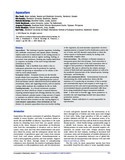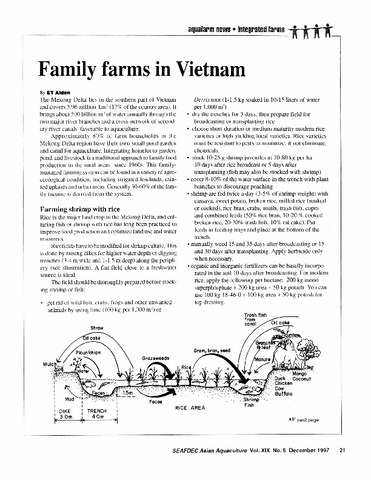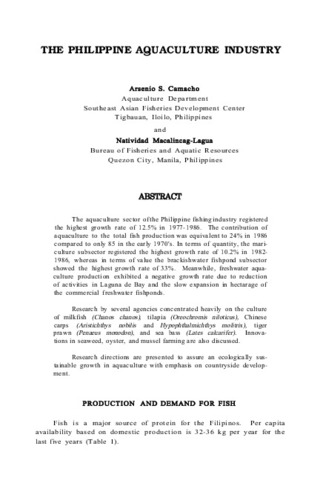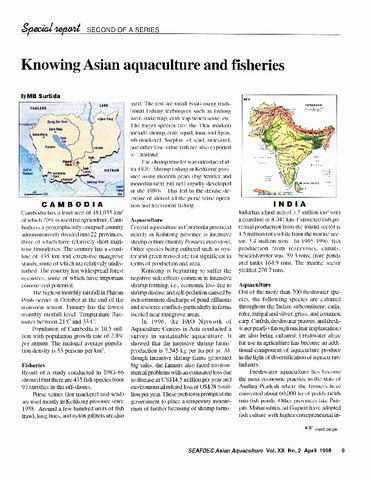Aquaculture

View/
Request this document
Date
2013Author
Page views
217Metadata
Show full item recordCited times in Scopus
Share
Abstract
Biophysical impacts of aquaculture, with consequences for biodiversity, vary with species and culture systems and include issues such as: nutrient enrichment/removal, chemicals, land use, species introductions, genetic flow to wild populations, disturbance of balance or introduction of pathogen/parasites, consumption of capture fishery resources, energy, and greenhouse gas emissions. Guiding principles, labeling schemes and various tools are needed to analyze performance and conformance. Ecological footprints and life-cycle analysis aim to capture biophysical performance, including up- and downstream effects of policy decisions. Aquaculture provides a range of services but also makes demands and impacts on ecosystem functions, services, and thus biodiversity.
Description
This article is a revision of the previous edition article by Kautsky, N., Folke, C., Rönnbäck, P., Troell, M., Beveridge, M., Primavera, J., Volume 1, pp. 185-198, © 2001, Elsevier Inc.
Suggested Citation
Troell, M., Kautsky, N., Beveridge, M., Henriksson, P., Primavera, J., Rönnbäck, P., & Folke, C. (2013). Aquaculture. In S. A. Levin (Ed.), Encyclopedia of Biodiversity (2nd ed., Vol. 1, pp. 189-201). Waltham: Academic Press.
Subject
Collections
Related items
Showing items related by title, author, creator and subject.
-
Family farms in Vietnam
Aldon, Eva T. (Aquaculture Department, Southeast Asian Fisheries Development Center, 1997) -
The Philippine aquaculture industry
Camacho, Arsenio S.; Macalincag-Lagua, Natividad (Aquaculture Department, Southeast Asian Fisheries Development Center, 1988)The aquaculture sector of the Philippine fishing industry registered the highest growth rate of 12.5% in 1977-1986. The contribution of aquaculture to the total fish production was equivalent to 24% in 1986 compared to ... -
Knowing Asian aquaculture and fisheries
Surtida, Marilyn B. (Aquaculture Department, Southeast Asian Fisheries Development Center, 1998-04)This article is the second of four parts.




